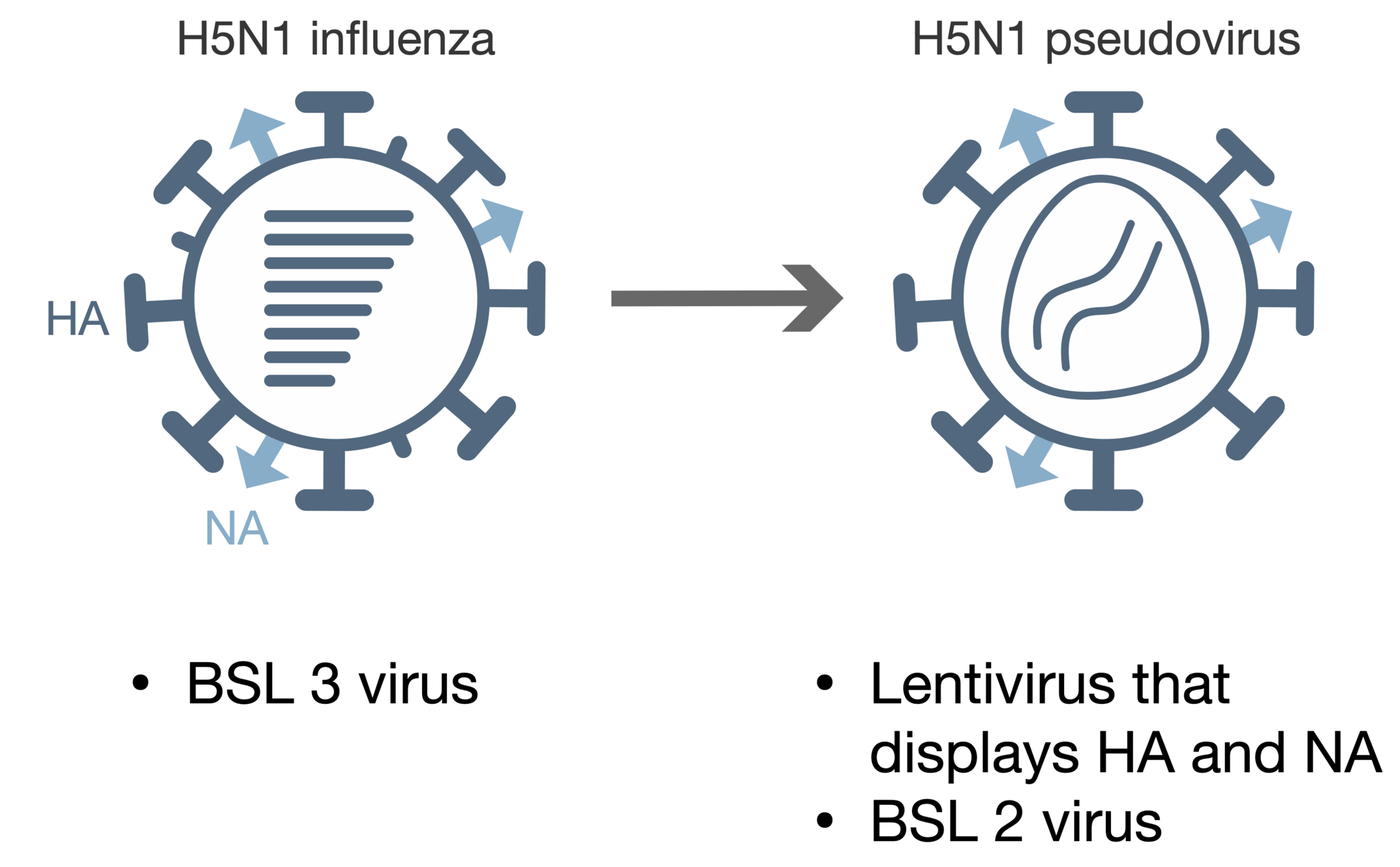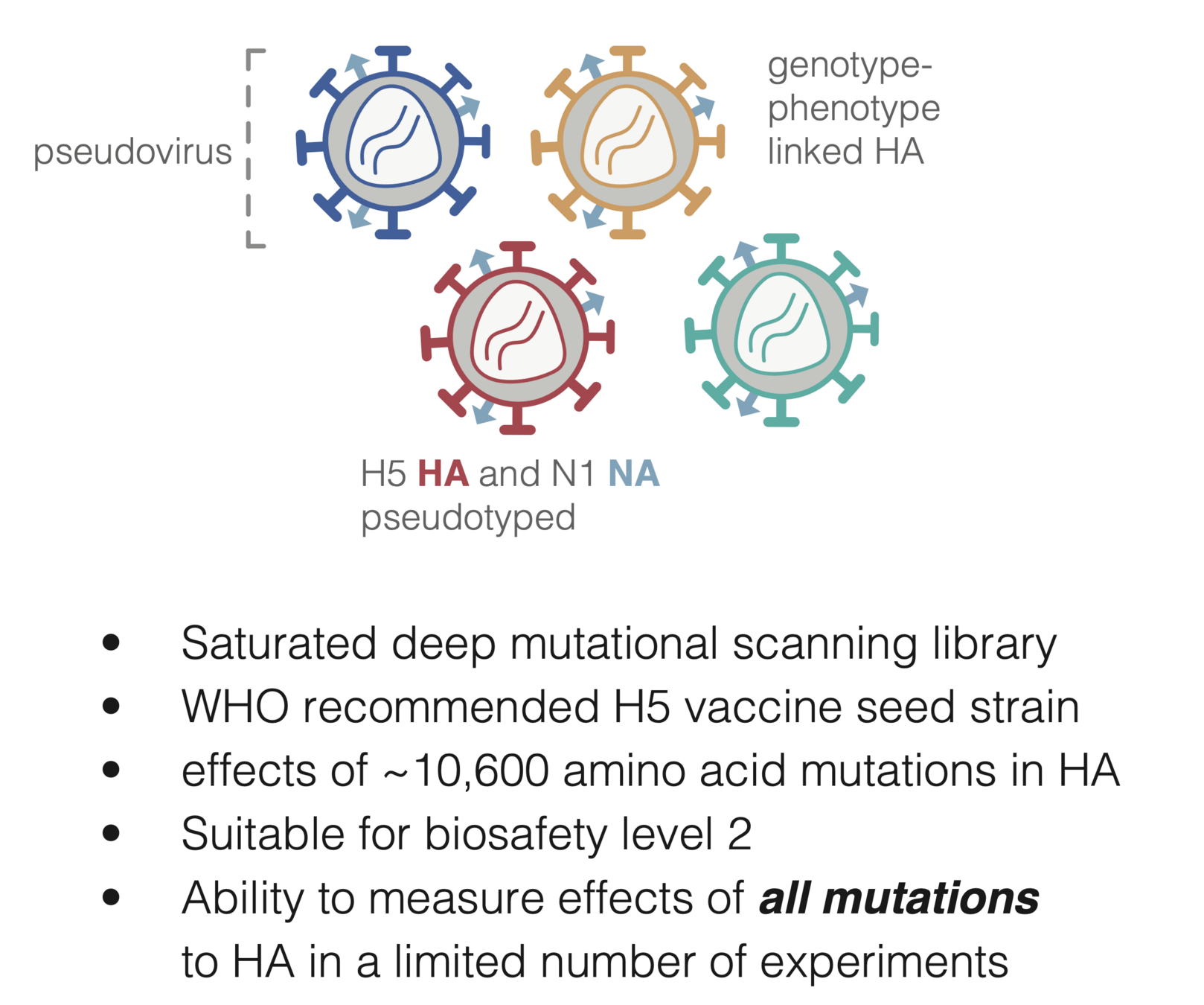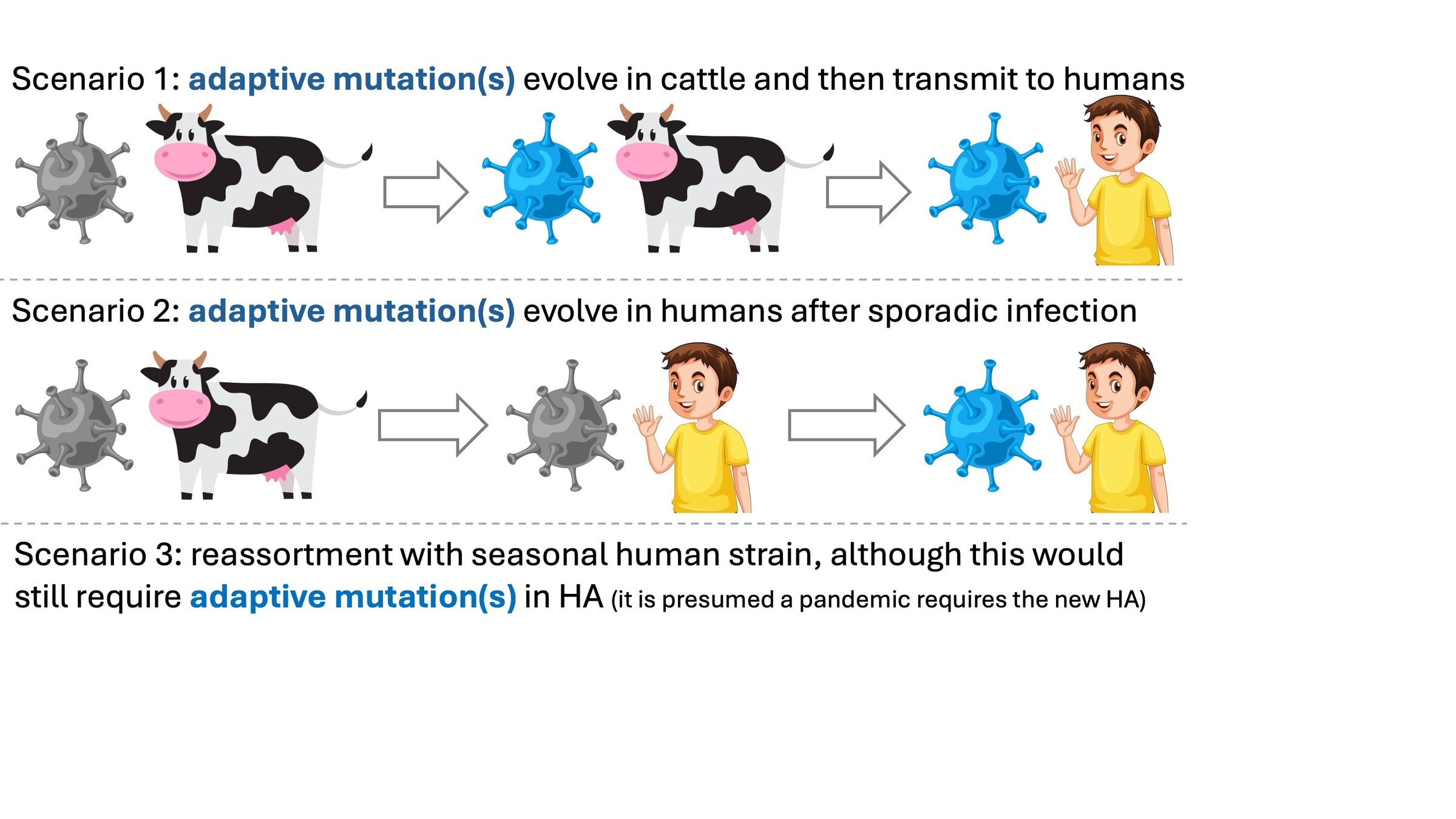Will H5 influenza cause a human pandemic?
Jesse Bloom
Fred Hutch Cancer Center / HHMI
These slides: https://slides.com/jbloom/nasem-h5
"It's tough to make predictions, especially about the future."
- Yogi Berra
Historical precedent
Animal influenza strains have caused human pandemics in past
Influenza pandemics have occurred for at least 500 years (Morens et al, 2010). Most recently:
1918: animal virus (maybe from birds?) jumped to humans (dos Reis, 2009)
1957: avian virus reassorted HA / NA / PB1 with human strain (Palese, 2004)
1968: avian virus reassorted HA / PB1 with human strain (Palese, 2004)
1977: inadvertant human release of strain from ~1950s (Burke & Schleunes, 2024)
2009: swine virus jumped to humans (Smith et al, 2009)

But there are also many animal strains that never adapted to humans
In 1872, influenza caused major outbreaks in poultry and horses, but likely never spread in humans beyond sporadic cases (Morens & Taubenberger, 2010)
There are multiple influenza strains in pigs that so far have only caused sporadic human cases (Anderson et al, 2021)
Influenza has caused substantial outbreaks in dogs without infecting humans (Parrish, 2015)
Lessons from historical precedent
There would be precedent for H5N1 adapting to cause a human pandemic...
But there would also be precedent for it never adapting to transmit in humans...
What molecular changes might adapt H5N1 to transmit in humans?
Molecular properties thought to promote human transmissibility
Viral polymerase functions well in mammalian cells (Long et al, 2019)
HA binds human receptors (Matrosovich, 2000; Ayora-Talavera, 2009)
Higher HA stability (Imai, 2012; Herfst, 2012)
Nucleoprotein resistant to MxA and BTN3A3 (Manz et al, 2013, Pinto 2023)
Appropriately balanced HA-NA activity (Yen, 2011)
Probably other adaptations that are not well understood
Viral polymerase functions well in mammalian cells (Halwe et al, 2024)
HA binds human receptors (Santos et al, 2024; Chopra et al, 2024)
Higher HA stability (Peacock et al, 2024)
Nucleoprotein resistant to MxA and BTN3A3
Appropriately balanced HA-NA activity
Probably other adaptations that are not well understood
Are there currently signs of H5N1 gaining adaptations?
Yes
No
(at least so far)
Unknown
(at least in public literature to date)
Test transmission in ferrets or growth in human airway cultures. Experimental gold standard---but slow, low throughput, and requires high biosafety. (Restori et al, 2024)
Test HA for binding to different glycans. Very informative, but only about receptor specificity. (Chopra et al, 2024)
Deep mutational scanning to test how all mutations affect key properties. High throughput, but may not capture epistasis or all relevant properties. (Dadonaite et al, 2024)
How to identify if strains have acquired adaptations
My lab specifically has used deep mutational scanning to measure effects of all mutations to H5 HA


Deep mutational scanning allows study of all HA mutations in a pooled library
How adaptive mutations might evolve
(These scenarios are not mutually exclusive)

How adaptive mutations might evolve
Cattle mammary gland may not select for viruses that use human receptors, which could reduce chance of scenario 1 (Carrasco, 2024)

How can science help us be prepared if there is a pandemic?
If there is a pandemic, vaccines will be most important countermeasure
One way to ensure vaccines are available quickly is to prepare candidate vaccine viruses, or even stockpile vaccines.
But as influenza HA acquires mutations, these candidate vaccines can become poorly matched to the actual viruses of concern.
Example: A160T mutation escapes antibodies from current candidate vaccine

Deep mutational scanning data from Dadonaite et al (2024)
A160T reduces neutralization by ferret sera, and is in a recent human case from Missouri

We need to ensure we can rapidly produce well-matched H5 vaccines
Carefully track antigenic changes in HA and update candidate vaccine viruses accordingly
Develop vaccine platforms that can be rapidly tailored to new strains (Furey et al, 2024)
But scientific research can help:
1. Understand how influenza has evolved in the past
2. Identify and monitor for potential adaptations to humans
3. Ensure well-matched vaccines could be produced quickly